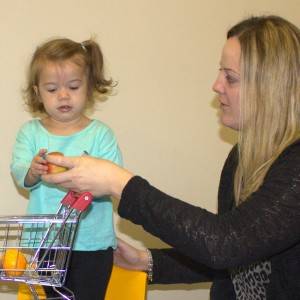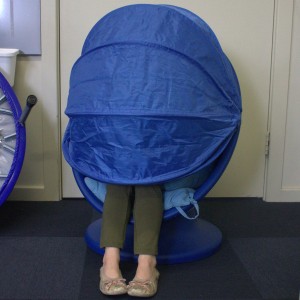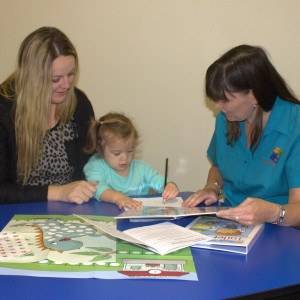 All parents have been there at some time, the screaming child, face down on the shopping centre floor while shoppers look on with that "do something with that child look". I still remember when my first child, the well behaved calm one, threw his first public tantrum. As he kicked the table and yelled, I paid for our uneaten meals and fled from the cafe horrified. When "second child" arrived I quickly lost count of the times I stepped over her kicking, screaming little body on the floor of the mall and repeating my mantra "if you have a tantrum you will not get it, whatever it is". So what do we do? Do we reason, bribe, ignore, yell back, give in? Let's look at what some parenting experts suggest.
All parents have been there at some time, the screaming child, face down on the shopping centre floor while shoppers look on with that "do something with that child look". I still remember when my first child, the well behaved calm one, threw his first public tantrum. As he kicked the table and yelled, I paid for our uneaten meals and fled from the cafe horrified. When "second child" arrived I quickly lost count of the times I stepped over her kicking, screaming little body on the floor of the mall and repeating my mantra "if you have a tantrum you will not get it, whatever it is". So what do we do? Do we reason, bribe, ignore, yell back, give in? Let's look at what some parenting experts suggest.
The first thing to consider is whether you are dealing with a "tantrum" (where the child is in control) or a "meltdown" where the child is no longer able to control their reactions. Both can include behaviours such as screaming, kicking, hitting, yelling, biting, throwing things and other things. There are however other differences:
Let's look at tantrums first:
- Tantrums have a goal. Usually it is that the child wants something, so things like being told "no" to something they have asked for is often a trigger. Sometimes it may be that they want to do something other than what they have been told to do.
- Tantrums have an audience. The child will look to make sure you are watching what they are doing.
- When the goal is reached the behaviour stops quickly. The child will be calm and appear their normal self in around 5 minutes, with no signs of physical distress.

Now let's look at meltdowns:
- Meltdowns are a reaction to something. The child may feel overwhelmed or overloaded. There is no goal, so the behaviour will only stop when the child has calmed down, or has been helped to regain control.
- There is no audience. The behaviour will continue even when there is no one paying attention.
- There are physical signs such as red ears, sweating, dilated pupils which the child cannot control and the child will take up to an hour to settle back to normal.
So how do we manage these?
Mark LeMessurier, counsellor, educator and parenting coach, in his book "Parenting Beaut Kids" give four golden rules for dealing with tantrums:
"Never respond to your child's tantrums with your own brand of bad behaviour". This makes perfect sense. Like everything in dealing with kids this is a "teachable moment". We don't want to be teaching kids more bad behaviours or teaching them that what they are doing is okay, because adults do it too.
"Do not give in to tantrums, otherwise you reward your child's anti-social behaviour". This one is tricky. We know giving in will work quickly to end the tantrum for now, but we need to remember that this will also teach the child that this is an effective way to get what you want quickly, and in the long run this will mean lots more tantrums.
 "Learn how to behave in tantrums situations so you don't strengthen them and other negative behaviours". Some useful things include:
"Learn how to behave in tantrums situations so you don't strengthen them and other negative behaviours". Some useful things include:
- avoiding triggers such as situations and times of the day which you know will make tantrums more likely such as shopping when your child is tired or hungry.
- distracting your child by giving them something to hold or a simple job to to do in tricky situations such as shopping
- planning ahead such as if you see something your child is likely to want (and it is reasonable to give it to them), why not offer for them to have it later as a reward for good behaviour. If they still have a tantrum make sure they don't get it though.
- saying clearly what you want your child to do and sticking to it. If you say pack up in five minutes then leave it for half an hour your child will learn to argue and possibly tantrum when pack up time arrives. Show your child you mean what you say and don't say things you know you will not follow through with.
"In time, because of the cool calm way you react your child will learn that tantrums are not an effective way to react". This means:
- Trying to catch a tantrum early and offer a choice. "I can see you want that toy and are thinking of having a tantrum. We can't buy that toy today, but if you make a good choice and help me shop you can have a drink when we are finished. If you have a tantrum we will go straight home". Giving kids a choice can often defuse things because they feel they have some control.
- Not worrying too much about what others are thinking. Most people have probably been there themselves anyway and if not does it really matter?
- Putting some distance between you and your child shows you are not buying into their drama. If they are safe you may use physical distance such as walking away. If it's not safe to do this you can use emotional distance or ignoring, such as checking your shopping list or your phone, or talking to another child who is behaving appropriately ( but don't talk about the tantrum though, talk about something unrelated).
- Remove them from the situation if your child is effecting others with their noise and commotion. Pick them up if needed and take them outside or to a quiet place until they calm down.
- Follow up every tantrum with a consequence, such as missing out on a treat or something they enjoy. Make sure your child understands that tantrums are not acceptable and will be followed by a consequence and discuss what that will be then follow through consistently.
 What about meltdowns? Children having meltdowns are out of control and can't respond to the above strategies. Meltdowns are common in children with autism, but can occur in other children also. Here is what Talking Matters psychologists recommend to manage meltdowns:
What about meltdowns? Children having meltdowns are out of control and can't respond to the above strategies. Meltdowns are common in children with autism, but can occur in other children also. Here is what Talking Matters psychologists recommend to manage meltdowns:
- make sure your child is safe, by removing dangerous items or moving them to a safer place.
- help them to calm down by speaking in a calm, steady voice
- give them things that help them regulate their emotions such as a sensory item, weighted item or a comforting toy. deep pressure, firm hugs or rocking helps some children.
- wait until they have fully calmed down before you talk with them about what has happened.
- identify situations that set your child off and teach strategies to cope in advance
- occupational therapists can help you identify things that may be helpful for your child.
- model your own self regulation strategies by talking out loud " I am angry that person cut me off in the car, so I will breath deeply and I will be okay".
 Need help with your child? Talking Matters provides assessment, diagnosis,therapy and support for child with a wide range of needs including developmental delays, learning and literacy challenges, speech and language delays, motor skill and sensory issues and children on the autism spectrum and their families.We are providers under the NDIA. We provide speech pathology, occupational therapy, social skills and play skills groups. We provide services in local schools and our disability consultant can help teachers support children who are experiencing difficulties in school. To find out more about our services and our team visit our website.
Need help with your child? Talking Matters provides assessment, diagnosis,therapy and support for child with a wide range of needs including developmental delays, learning and literacy challenges, speech and language delays, motor skill and sensory issues and children on the autism spectrum and their families.We are providers under the NDIA. We provide speech pathology, occupational therapy, social skills and play skills groups. We provide services in local schools and our disability consultant can help teachers support children who are experiencing difficulties in school. To find out more about our services and our team visit our website.
Our website has a range of downloadable information sheets, printable activities and useful links. To connect with our community of families, therapists and educators join us on Facebook, Twitter and pintrest.
Related Blog Posts
If you liked this post you may also like:
Dressing - Supporting Your Child's Development
50 activities for senses
Using MONOPOLY to Grow
Christmas activities



